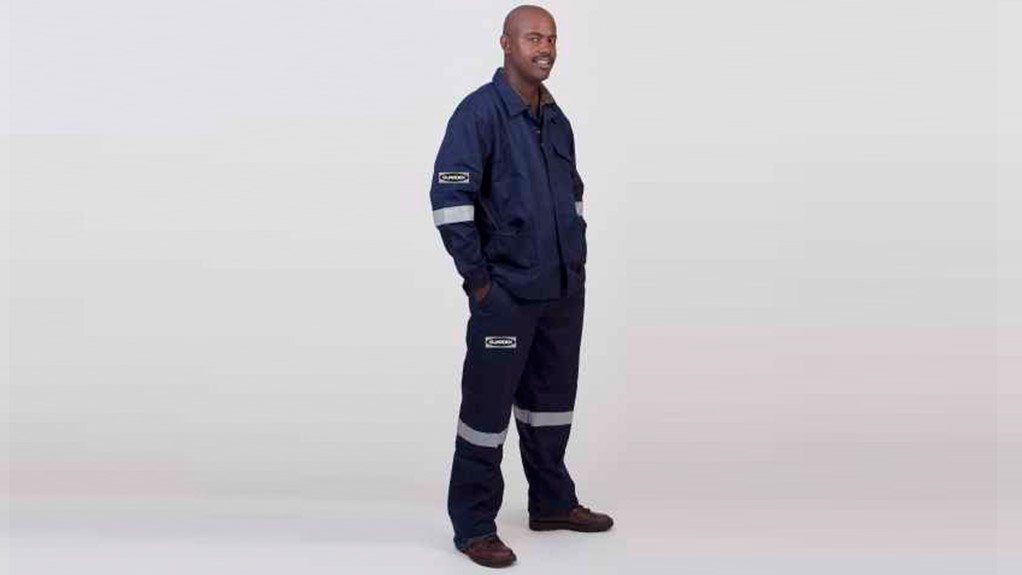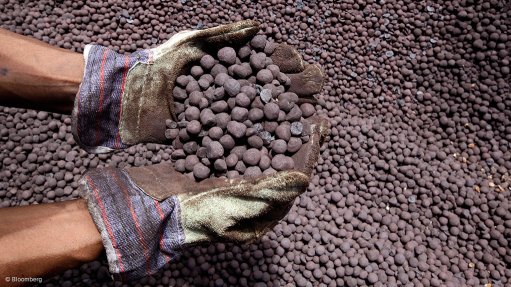Increase in demand for flame-retardant workwear


STANDARD APPROVED The Guardex flame-retardant treatment has been tested and approved to the National Fire Protection Authority (NFPA) 2112 standard
Since the introduction of the flame-retardant 100%-cotton Guardex fabric range to the local market in October, last year, personal protective equipment (PPE), cleaning chemicals, paper products, and industrial consumable supplies supplier G Fox & Co has noted a significant increase in demand for this fabric range.
The tetrakis hydroxymethyl phosphonium salt-ammonia cure method, which has a mature flame-resistant finish, is used to manufacture the Guardex range, a product from textile manufacturer Winnitex, says G Fox & Co MD Rob Cohen, who adds that this fabric is an upgraded version, compared with other products currently available to industry.
G Fox & Co introduced Guardex to the market because the company believes that the health and safety risk levels for employees are too high when they were wearing other flame-retardant fabrics.
While Cohen initially ordered the 3 000 m of fabric for trial runs and for opening orders, he notes that current repeat orders require a minimum of 10 000 m each and he orders every two to three months, compared with the initial repeat period of four months.
Further, he notes that the company has received orders from the petrochemicals industry and from a coatings manufacturer comprising several hundred units of Guardex garments.
The fabric can be worn by staff in the oil refinery industry and by artisans, such as welders and grinders, and it is also certified for use in an electrical environment, Sparks adds.
The industry has received the product quite well, particularly industries that require the garment to sustain heavy-duty industrial washing.
“As Guardex forms an insoluble flame-resistant polymer inside the fibre core, it can be subjected to a minimum of 100 industrial laundry washes,” Cohen says.
Further, the finish does not affect the physical strength of the fabric and has no storage stability problems. While, chemically coated fabrics lose retardancy over long storage periods, Guardex does not, he points out.
Fire-Protection Features
The Guardex flame-retardant treatment is guaranteed to last the life span of the fabric and has been tested and approved to the National Fire Protection Authority (NFPA) 2112 standard, Cohen says.
The NFPA 2112 “protects workers from flash-fire exposure and injury by specifying performance requirements and test methods for flame-resistant fabric and garments and the criteria covers the design, construction, evaluation and certification of flame-resistant fabrics for use by industrial personnel”, according to the NFPA website.
Another feature is the fabric’s arc thermal protective value (ATPV), which refers to the maximum incident energy that protective equipment can be exposed to and prevents the onset of a second-degree burn.
“The Guardex fabric has an ATPV of 10.6 cal/cm2, tested in accordance with ASTM International Standard Test Method F 1959/F 1959M-06ae1.”
Cohen adds that, while synthetic fibres will produce a smouldering effect when they catch alight, treated cotton takes longer to ignite, and will burn and extinguish faster, without smouldering remains.
The fabric aims to decelerate the combustion process to extinguish the flames and reduce the period of burning, he says, noting that if the fabric does catch alight, the wearer would be able to extinguish the flame quicker than if another fabric had been worn.
Other key factors supporting the fabrics include cost efficiency, as G Fox & Co’s Guardex can achieve similar results, compared with other fabrics on the market that meet with NFPA 2112 approval, but at a third of the price, Cohen says.
Moreover, the cotton fabric is cooler, significantly more comfortable than the polycotton or polyester fabrics and lightweight enough for the South African market, he believes.
Cohen points out that in terms of South African demand, in most cases, the top-of-the-range fabrics provide more protection than required and are too expensive, while fabrics that are not as durable do not provide enough support or protection.
“In light of this, G Fox & Co slotted in an intermediate product that offers peace of mind that the fabric will provide the necessary protection, without the consumer having to pay exorbitant prices for the product,” he says.
Industry Challenges
Cohen points out that the workwear and work apparel industry remains dependent on industry job creation.
Unless there is sufficient job creation, there is significant pressure on the industry, particularly as the industry seems to be downscaling on employment, he says.
An increasing amount of inferior personal protective workwear is also entering the market and being sold at cheaper prices to enable companies to remain competitive and obtain a market share, Cohen points out.
“As the value is removed from the product, it does not always provide the necessary support and protection.”
“However, if industry job creation increases, I believe prices and product value will increase,” Spark concludes.
Comments
Press Office
Announcements
What's On
Subscribe to improve your user experience...
Option 1 (equivalent of R125 a month):
Receive a weekly copy of Creamer Media's Engineering News & Mining Weekly magazine
(print copy for those in South Africa and e-magazine for those outside of South Africa)
Receive daily email newsletters
Access to full search results
Access archive of magazine back copies
Access to Projects in Progress
Access to ONE Research Report of your choice in PDF format
Option 2 (equivalent of R375 a month):
All benefits from Option 1
PLUS
Access to Creamer Media's Research Channel Africa for ALL Research Reports, in PDF format, on various industrial and mining sectors
including Electricity; Water; Energy Transition; Hydrogen; Roads, Rail and Ports; Coal; Gold; Platinum; Battery Metals; etc.
Already a subscriber?
Forgotten your password?
Receive weekly copy of Creamer Media's Engineering News & Mining Weekly magazine (print copy for those in South Africa and e-magazine for those outside of South Africa)
➕
Recieve daily email newsletters
➕
Access to full search results
➕
Access archive of magazine back copies
➕
Access to Projects in Progress
➕
Access to ONE Research Report of your choice in PDF format
RESEARCH CHANNEL AFRICA
R4500 (equivalent of R375 a month)
SUBSCRIBEAll benefits from Option 1
➕
Access to Creamer Media's Research Channel Africa for ALL Research Reports on various industrial and mining sectors, in PDF format, including on:
Electricity
➕
Water
➕
Energy Transition
➕
Hydrogen
➕
Roads, Rail and Ports
➕
Coal
➕
Gold
➕
Platinum
➕
Battery Metals
➕
etc.
Receive all benefits from Option 1 or Option 2 delivered to numerous people at your company
➕
Multiple User names and Passwords for simultaneous log-ins
➕
Intranet integration access to all in your organisation



















